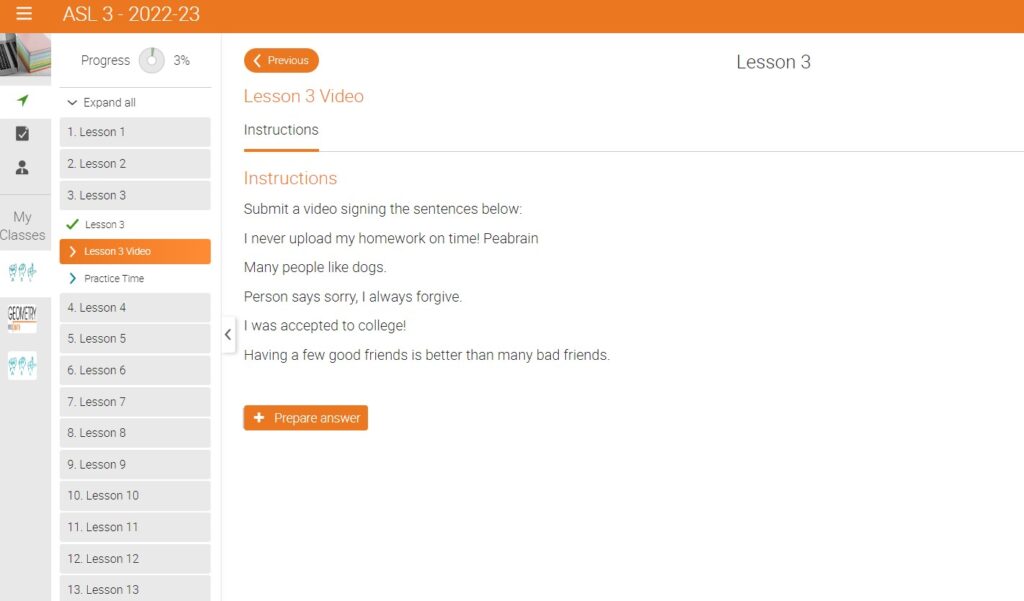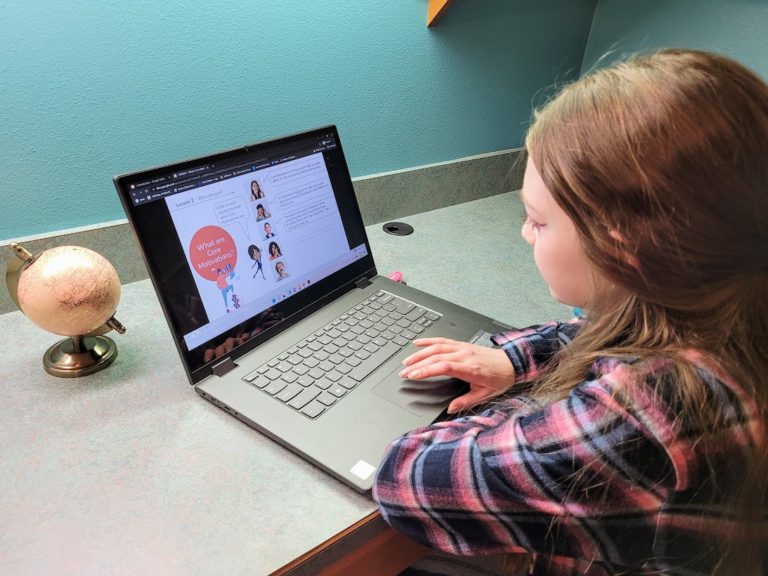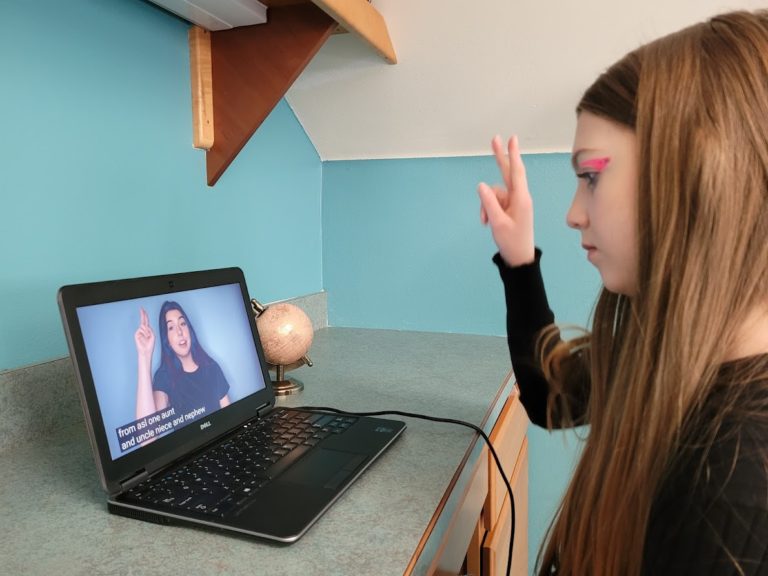Our Favorite Option for Foreign Language When Homeschooling High School
The foreign language credit. There it is, lurking in the background, causing many moms of homeschooled college-bound teens, to fret over how they will meet this requirement. How do you help your teen get in two (or three) years of a foreign language when you yourself don’t speak one?
And, if as a homeschool mom, you get to set your teen’s graduation requirements, why include foreign language at all?
Disclaimer: This post is sponsored by Mr. D Math. I received compensation for my time and honest opinion.
Why Include Foreign Language in Your Homeschool Graduation Requirements
First, let’s cover why you should include foreign languages as part of your homeschool graduation requirements. After all, it would be easier to just skip it. And, along with your teen, you may make that choice. But before you decide to just “let it go,” let’s go over all the reasons why you shouldn’t.
College Entrance Requirements
The most common reason for requiring two or more years of a foreign language in the high school years is to satisfy college-entrance requirements. I always tell prospective homeschool high school parents to first check the entrance requirements of 2-3 colleges their teen may be interested in before setting graduation requirements. Even if your teen is not college-bound, I recommend at a minimum checking with your local state colleges. It is much easier to switch from a college-bound high school track than from a non-college-bound track if your teen changes their mind.
Some of your more competitive colleges may require three years of the same foreign language. Some of your lesser competitive colleges may give the option between electives, requiring two years of either foreign language, computer science, visual and performing arts, or approved vocational education units.
The only way to know for sure is to check with specific colleges. Traditionally, however, two foreign language credits have been part of the admission requirements of universities within the United States. So planning on two credits is generally a safe bet.
Increase Possibilities
College aside, being familiar with another language can increase future possibilities for your teen. Even if they do not become fluent, they may still benefit from their limited knowledge in social or travel situations. And if they do become fluent, it increases their potential for many opportunities, especially in employment.
Spark a Desire
Including a foreign language class in your homeschooled teen’s repertoire can also spark a desire for languages or cultures that might not have otherwise happened. Your teen may just find they have a passion for the language being studied.
Improve Test Performance
Depending on the foreign language you choose, this can help increase performance on the Writing & Language portion of the SAT. Latin is particularly helpful in improving test scores. Since English, as well as the romance languages, all share Latin roots, learning one increases knowledge of root words thus improving vocabulary.
Teach Grammar
One of the best ways to learn grammar is by studying a foreign language. When you are a native English speaker, you learn sentence structure as you learn to talk. It becomes second nature and you aren’t really thinking about whether or not your sentence has both a subject and predicate when speaking. You aren’t thinking about what an adjective is and where it comes in the sentence when you’re a native speaker because that knowledge is inherent. But when you begin learning a foreign language whose sentence structure is different, then that becomes necessary.
Suddenly, you’re very focused on all the parts of a sentence and identifying each one so you can put a sentence together.
Related| How to Easily Learn ASL I In Your Homeschool with Mr. D Math
Choosing a Foreign Language for Your Homeschool
When choosing a foreign language option for our homeschool, I take into account three things:
- Whether or not my teens will have someone to practice speaking with
- If they will be self-guided or have an instructor
- And the motivation of my teen in learning the language
These three things determine which language we choose. I personally feel, if you are going to pick a spoken language, it is important to have someone you can regularly practice conversation with. With the right determination, you can, of course, learn any language you choose. However, being able to practice your skill is also important.
While my kids have dabbled in Spanish and French, when it comes to earning high school foreign language credit, we tend to stick with two choices: Latin and American Sign Language (ASL). Of these, our experience with ASL courses through Mr. D Math has hands-down been our favorite.

Why Learn ASL as a Foreign Language in High School?
Not many people think of ASL when they think of learning a foreign language. But really, a foreign language is simply any other language than your own native language.
ASL is not simply using signs for English words. It does have its own sentence structure and interpretation which differs from English.
Here are just a few brief reasons why you should consider using ASL for your homeschool high school foreign language credit:
- Allows you to communicate with the vast number of deaf and hard-of-hearing individuals in the United States
- You can communicate underwater
- You can carry on conversations in quiet places
- ASL translators are in high demand
- It increases spatial learning
- Better able to interpret body language
Related| Use These Awesome Self-Paced Classes for Homeschool Foreign Language
Learn ASL through Mr. D Math’s Self-Paced ASL Courses
So far, our favorite option for a high school foreign language credit is the ASL courses offered through Mr. D Math. My freshman is currently enrolled in Mr. D Math’s ASL III course. She took the first two in Junior High and developed a sincere interest in learning the language.
As a self-paced class, students can take the time they need to master the material before moving on. As I mentioned, my daughter has taken the ASL I and ASL II courses with Mr. D Math as well. The courses have increased in difficulty, but the design of the classes remains the same. The biggest difference is that beginning in ASL II, students will need to be able to upload videos to YouTube, using their own or a parent’s account.
All the ASL courses are taught by Ms. Thia, who does an exceptional job with the class.
Each lesson contains a short video where they learn new signs. For ASL III they are expected to practice each lesson for 2-3 hours during the week. They will then upload a video of them signing the script for that lesson.

In addition, once a month there is a live help session where they also learn how to sign something awesome–usually a song or medley. My daughter has learned how to sign “Let It Go,” “We Don’t Talk About Bruno,” and “The Star-Spangled Banner” among others.

Throughout the course, students also learn about Deaf culture, which is an important part of learning ASL.

Throughout the length of the course, different contests are held that students can enter as well. My daughter has won several gift cards and most recently, a live Zoom meeting with an award-winning songwriter.
I have enjoyed watching my daughter’s confidence and skill increase as she has progressed through the ASL courses offered by Mr. D Math. They now offer an ASL Beginners Immersion class, which sounds wonderful. I’m hoping they will offer an ASL IV course because my daughter would like to continue becoming more fluent in the language.
This has truly been a wonderful experience for her.
I highly recommend the ASL courses through Mr. D Math to satisfy your homeschool foreign language credit.









